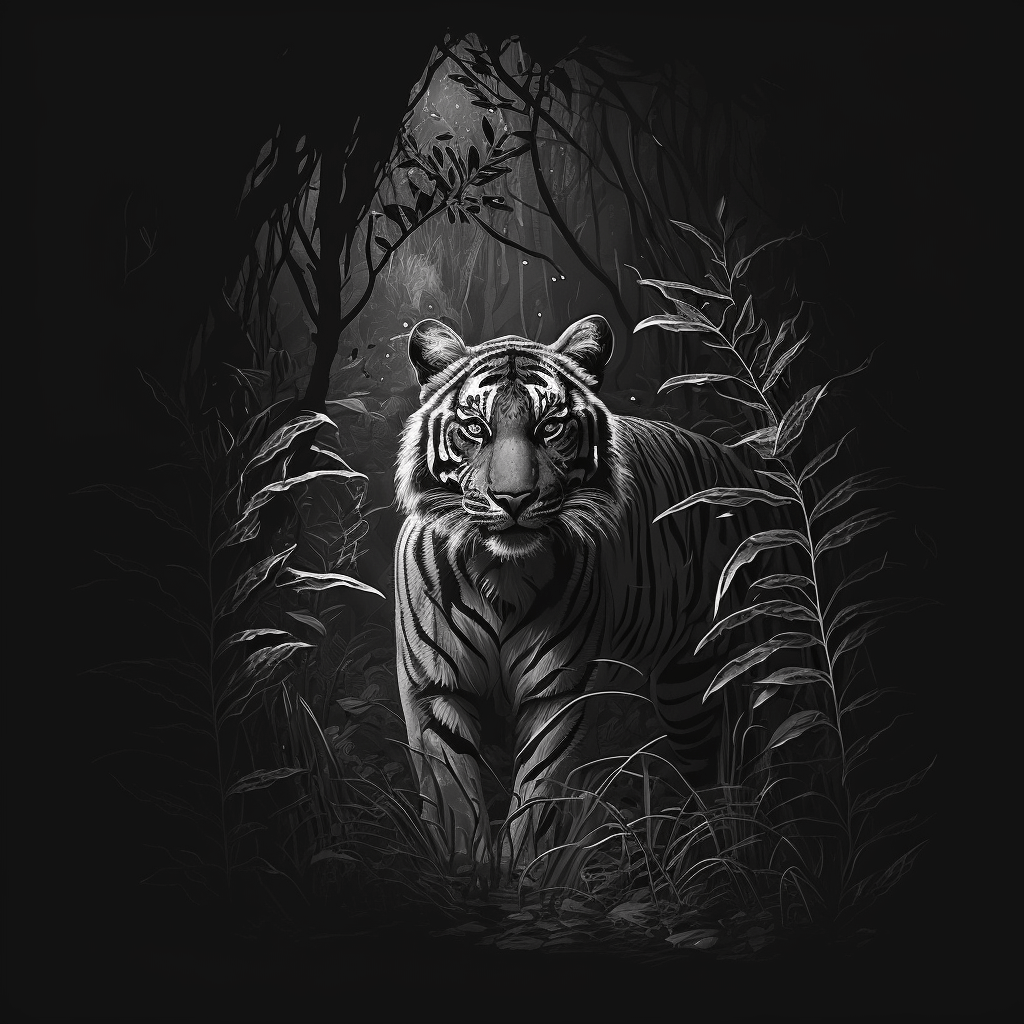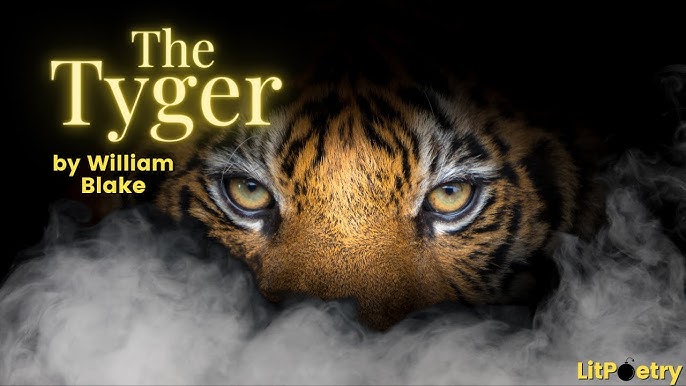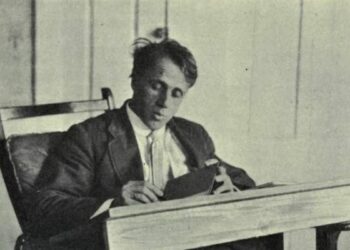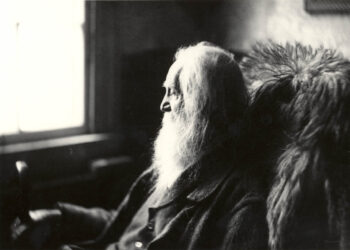Introduction
Summary Of The Tyger By William Blake “The Tyger,” published in 1794 as part of his collection Songs of Experience, is one of his most celebrated works. This poem poses profound questions about the nature of creation, the duality of existence, and the complexity of the creator. Through vivid imagery and rhythmic intensity, Blake invites readers to explore the mysterious relationship between beauty and terror, good and evil, in the natural world. This article aims to provide a detailed analysis of “The Tyger,” examining its themes, structure, and the philosophical questions it raises.
Summary and Analysis of “The Tyger”
The Structure of the Poem
“The Tyger” consists of six quatrains, each following a consistent AABB rhyme scheme. The poem employs a rhythmic, almost hypnotic quality, which enhances its contemplative tone. The repetition of key phrases and questions throughout the poem creates a sense of urgency and emphasizes the speaker’s awe and fear of the creature he describes.
Read More
Stanza 1: The Awe of Creation
Lines 1-2: “Tyger Tyger, burning bright, / In the forests of the night;”
Summary Of The Tyger By William Blake The poem opens with a striking and memorable line that immediately captures the reader’s attention. The repeated invocation of “Tyger” establishes a sense of intimacy with the creature while also hinting at its ferocity. The phrase “burning bright” suggests both the tiger’s vibrant beauty and its dangerous, predatory nature. The “forests of the night” evoke a sense of mystery and darkness, setting the stage for the exploration of the tiger’s character.
Lines 3-4: “What immortal hand or eye, / Could frame thy fearful symmetry?”
Here, the speaker poses a fundamental question about the nature of the tiger’s creation. The use of “immortal hand or eye” implies a divine creator, prompting readers to consider the relationship between the creator and the created. The phrase “fearful symmetry” suggests that while the tiger is a magnificent creature, it also embodies a terrifying aspect. This duality introduces one of the poem’s central themes: the coexistence of beauty and terror in creation.

Stanza 2: The Creator’s Craftsmanship
Lines 5-6: “In what distant deeps or skies. / Burnt the fire of thine eyes?”
The speaker continues to ponder the origins of the tiger, contemplating the “distant deeps or skies” from which its fiery essence emanates. This imagery evokes a sense of cosmic mystery, suggesting that the tiger’s creation is tied to forces beyond human understanding. The fire in the tiger’s eyes symbolizes both its fierce spirit and the danger it represents.Summary Of The Tyger By William Blake
Lines 7-8: “On what wings dare he aspire? / What the hand, dare seize the fire?”
The speaker questions the audacity of the creator in attempting to forge such a powerful being. The use of “wings” suggests a transcendent ability to reach beyond the ordinary, while the phrase “dare seize the fire” reinforces the notion that the act of creation involves inherent risks and challenges. Here, Blake raises questions about the nature of ambition and the responsibilities of the creator.Summary Of The Tyger By William Blake
Stanza 3: The Creator’s Tools
Lines 9-10: “And what shoulder, & what art, / Could twist the sinews of thy heart?”
In these lines, Blake shifts focus to the physicality of the tiger’s creation. The mention of “shoulder” implies strength and labor, while “art” suggests a skillful, perhaps divine, craftsmanship. The phrase “twist the sinews of thy heart” conjures images of intricate anatomical design, hinting at the complexity and depth of the tiger’s existence. The heart, often associated with emotion and passion, indicates that the tiger embodies more than just physical prowess; it possesses a fierce spirit.
Lines 11-12: “And when thy heart began to beat, / What dread hand? & what dread feet?”
As the poem progresses, the speaker reflects on the moment of the tiger’s animation. The “dread hand” and “dread feet” signify the fearsome power of the creator and the creature alike. The repetition of “dread” emphasizes the terrifying aspects of both the creator and the creation, reinforcing the poem’s exploration of fear and awe in the face of nature’s wonders.
Stanza 4: The Nature of Creation
Lines 13-14: “What the hammer? what the chain, / In what furnace was thy brain?”
In this stanza, Blake employs industrial imagery, using “hammer” and “chain” to evoke the idea of craftsmanship in creation. The mention of a “furnace” conjures the image of a forge, suggesting that the tiger’s existence is the result of intense labor and transformative processes. This imagery can also be interpreted as a commentary on the Industrial Revolution, reflecting the tension between nature and industry.
Lines 15-16: “What the anvil? what dread grasp, / Dare its deadly terrors clasp!”
The speaker continues to ponder the tools of creation, introducing the “anvil” as a symbol of the creator’s strength and determination. The phrase “dread grasp” reinforces the poem’s exploration of fear, suggesting that the creator has the power to shape and contain the tiger’s terrifying nature. This imagery evokes the duality of creation: it can produce both beauty and terror, depending on the creator’s intentions.
Stanza 5: The Dilemma of Creation
Lines 17-18: “When the stars threw down their spears / And water’d heaven with their tears:”
In these lines, Blake shifts the focus from the tiger to the cosmos, suggesting a universal response to the act of creation. The imagery of stars “throwing down their spears” implies a sense of defeat or surrender, while the “tears” of heaven suggest sorrow or lamentation. This juxtaposition of power and vulnerability reinforces the poem’s exploration of the consequences of creation, as even celestial beings may mourn the existence of fearsome creatures.Summary Of The Tyger By William Blake
Read More
Lines 19-20: “Did he smile his work to see? / Did he who made the Lamb make thee?”
The speaker questions whether the creator finds joy in the tiger’s existence. The reference to “he who made the Lamb” invokes Blake’s earlier work, Songs of Innocence, suggesting a contrast between innocence (represented by the lamb) and the ferocity of the tiger. This critical question highlights the poem’s exploration of the duality of creation: can the same creator produce both gentle and terrifying beings? It prompts readers to consider the complexities of the creator’s intentions and the nature of good and evil.
Stanza 6: The Final Reflection
Lines 21-22: “Tyger Tyger burning bright, / In the forests of the night:”
The poem concludes with a repetition of the opening lines, creating a sense of cyclical reflection. This repetition reinforces the awe and wonder surrounding the tiger, encapsulating the central themes of the poem. The speaker’s fascination with the tiger remains unresolved, reflecting the complexities of understanding creation.Summary Of The Tyger By William Blake
Lines 23-24: “What immortal hand or eye, / Dare frame thy fearful symmetry?”
The poem ends with a return to the opening question about the creator. By restating this inquiry, Blake emphasizes the central dilemma of the poem: the struggle to comprehend the nature of the creator and the relationship between beauty and terror. This cyclical structure leaves readers contemplating the mysteries of existence and the duality inherent in all creation.Summary Of The Tyger By William Blake
Themes in “The Tyger”
1. The Duality of Creation
One of the most significant themes in “The Tyger” is the duality of creation. Blake contrasts the beauty of the tiger with its terrifying aspects, raising questions about the nature of the creator. The poem suggests that creation is not a simple act of goodness; it encompasses both beauty and horror.
2. The Nature of the Creator
Blake explores the complexities of the creator’s role in the act of creation. The repeated questions throughout the poem emphasize the speaker’s awe and confusion regarding the creator’s intentions and capabilities. This theme invites readers to consider the nature of divinity and the moral implications of creation.
Read More
3. The Relationship Between Fear and Awe
The poem examines the relationship between fear and awe in the natural world. The speaker’s admiration for the tiger is intertwined with a sense of terror, suggesting that beauty can often evoke fear. This theme resonates with the Romantic notion of the sublime, where overwhelming beauty is accompanied by feelings of fear and respect.Summary Of The Tyger By William Blake
4. The Influence of Industrialization
Blake’s use of industrial imagery in the poem reflects the impact of the Industrial Revolution on society and the natural world. The references to tools and craftsmanship evoke the notion that creation requires labor and struggle. This theme can be interpreted as a commentary on the tension between nature and industrial progress.Summary Of The Tyger By William Blake
5. Innocence vs. Experience
The poem draws a contrast between innocence and experience, particularly through the juxtaposition of the tiger and the lamb. While the lamb symbolizes innocence and purity, the tiger represents the darker aspects of creation. This theme reflects Blake’s broader exploration of these dualities throughout his work.
Symbolism in “The Tyger”
1. The Tyger
The tiger itself serves as the central symbol of the poem, representing both beauty and terror. It embodies the complexities of creation, prompting questions about the nature of existence and the duality of good and evil.
2. Fire
Fire symbolizes both creativity and destruction in the poem. The “burning bright” quality of the tiger suggests a fierce spirit, while the references to fire in the context of creation hint at the transformative power of the creative process.
3. The Forge
The imagery of the forge, with its hammers and anvils, symbolizes the labor and craftsmanship involved in creation. This industrial imagery reflects the struggle inherent in the creative process and the challenges faced by the creator.
4. The Stars
The stars represent the celestial forces and the broader universe that respond to the act of creation. Their tears suggest a cosmic awareness of the duality and complexity of existence, reinforcing the poem’s themes of beauty and terror.Summary Of The Tyger By William Blake

Conclusion
William Blake’s “The Tyger” is a profound exploration of creation, duality, and the nature of existence. Through vivid imagery, rhythmic intensity, and thought-provoking questions, Blake invites readers to contemplate the relationship between beauty and terror, the responsibilities of the creator, and the complexities of the natural world. The poem’s enduring relevance lies in its ability to provoke deep reflection on the mysteries of existence and the human experience.
FAQ
1. What is the main theme of “The Tyger”?
The main theme of “The Tyger” is the duality of creation, exploring the coexistence of beauty and terror. Blake raises questions about the nature of the creator and the complexities inherent in the act of creation.Summary Of The Tyger By William Blake
2. What does the tiger symbolize in the poem?
The tiger symbolizes both beauty and danger. It embodies the complexities of existence, prompting readers to consider the moral implications of creation and the nature of good and evil.
3. How does Blake contrast the tiger and the lamb?
Blake contrasts the tiger and the lamb to explore the themes of innocence versus experience. While the lamb represents purity and gentleness, the tiger embodies ferocity and terror, highlighting the dualities of existence.Summary Of The Tyger By William Blake
4. What role does imagery play in “The Tyger”?
Imagery plays a crucial role in “The Tyger,” as it evokes vivid mental pictures that enhance the poem’s themes. Blake’s use of industrial and cosmic imagery creates a sense of wonder and awe, inviting readers to reflect on the complexities of creation.Summary Of The Tyger By William Blake
5. How does the poem reflect the influence of the Industrial Revolution?
The industrial imagery in “The Tyger,” such as references to tools and craftsmanship, reflects the impact of the Industrial Revolution on society and nature. Blake critiques the mechanization of creation, highlighting the tension between industry and the natural world.
6. What philosophical questions does “The Tyger” raise?
“The Tyger” raises several philosophical questions, including the nature of the creator, the morality of creation, and the relationship between beauty and terror. The poem invites readers to contemplate the complexities of existence and the duality inherent in all creation.
7. How does the structure of the poem contribute to its themes?
The poem’s structure, with its rhythmic quatrains and repetitive questioning, creates a sense of urgency and contemplation. This structure reinforces the speaker’s awe and fear, enhancing the exploration of the themes of beauty and terror.
8. What is the significance of the repeated questions in the poem?
The repeated questions in “The Tyger” emphasize the speaker’s struggle to comprehend the nature of the tiger and its creator. This questioning reflects a deeper inquiry into the mysteries of existence and the complexities of creation.
Read More




